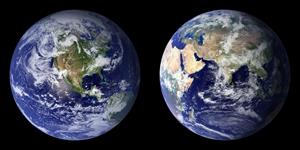PDF chapter test TRY NOW
Water and its availability
Water is one of the most important substances for the survival of living organisms. One can survive without food, but it is impossible to survive without water.
Have you ever thought that from where do we get our water?
Our planet earth is abundant with water. About two-thirds of the Earth is covered with water. Hence, earth is known as the Water planet or Blue planet.

About 97% of the water is found in the form of sea and oceans which have dissolved salts making the water saline.
When water passes through the layers of soil it dissolves the salts and minerals that have been deposited in seas and oceans for millions of years. Moreover the oceanic volcanoes which are present inside, also add salts to the sea. This water which contains large amount of salts dissolved in it and is not potable or suitable for drinking is known as saline water.
This water cannot be used for drinking, domestic, agricultural, and industrial purposes.
Fresh water:
The water that is used for our daily purposes is known as freshwater. This water is obtained from ponds, puddles, river, tube-wells and taps at home.
The given below pie chart shows the information regarding the availability of fresh water as various sources.
The given below pie chart shows the information regarding the availability of fresh water as various sources.

From the pie chart, it can be observed that 97% water is saline water and only 3% of water is found as fresh water in the form of polar ice caps and glaciers. Hence, this portion of water is not readily available for drinking.
This 3% of freshwater can be split up as follows:
This 3% of freshwater can be split up as follows:
- Polar ice caps and glaciers 68.7%
- Ground water 30.1%
- Other sources of water 0.9%
- Surface water 0.3 %
The distribution of the total 0.3% of surface water is as below:
- Lakes 87%
- Rivers 2%
- Swamps 11%
Thus from this information we can conclude that a very small amount of fresh water is available for the usage of humans and hence it is important to conserve water.
